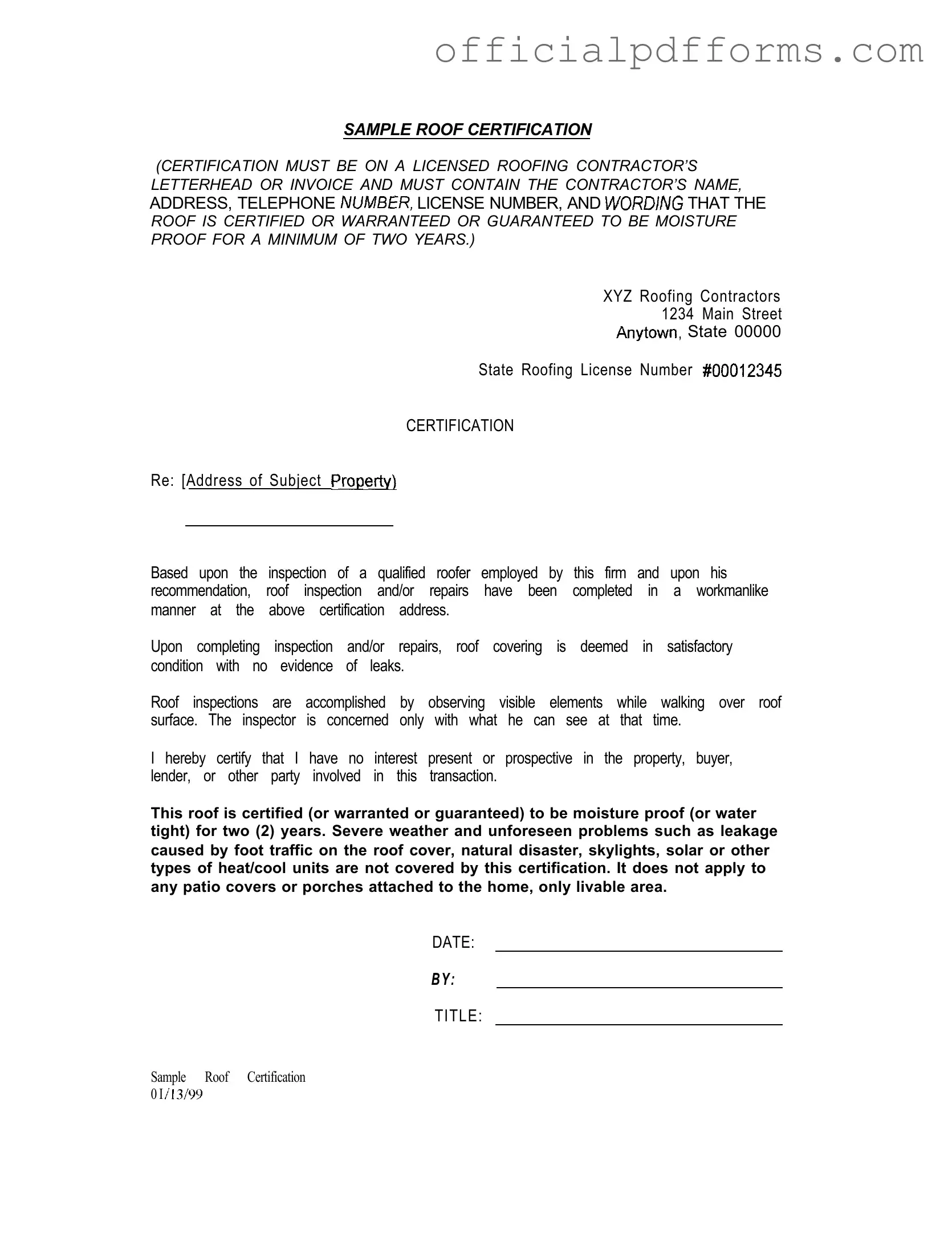The Sample Roof Certification form serves as a formal document issued by a licensed roofing contractor. It certifies that the roof of a specified property has been inspected and is deemed to be moisture-proof for a minimum of two years. This certification provides assurance to property owners, buyers, and lenders regarding the condition of the roof.
The certification must be printed on the letterhead or invoice of a licensed roofing contractor. Essential information includes:
-
Contractor’s name
-
Contractor’s address
-
Contractor’s telephone number
-
Contractor’s license number
-
Explicit wording that the roof is certified, warranted, or guaranteed to be moisture-proof for at least two years
How long is the roof certified for moisture proofing?
The roof is certified to be moisture-proof for a minimum period of two years from the date of the certification. This timeframe indicates the contractor's assurance regarding the roof's condition following inspection and any necessary repairs.
What does the inspection process entail?
The inspection process involves a qualified roofer visually examining the roof while walking on its surface. The inspector assesses the visible elements of the roof and determines its condition based on what can be observed at that time. This process ensures that any apparent issues are identified and addressed.
Are there any limitations to the certification?
Yes, there are limitations. The certification does not cover damages caused by severe weather, natural disasters, or issues arising from foot traffic on the roof. Additionally, it does not apply to patio covers or porches attached to the home; it is strictly for livable areas.
Who can issue the Sample Roof Certification?
The Sample Roof Certification can only be issued by a licensed roofing contractor. This ensures that the inspection and certification process is conducted by a qualified professional who adheres to state regulations and standards.
What should I do if I have concerns about my roof after certification?
If concerns arise regarding the roof after it has been certified, it is advisable to contact the roofing contractor who issued the certification. They can provide guidance and may offer further inspection or assistance, depending on the circumstances.
Can I transfer the roof certification to a new owner?
The roof certification is generally tied to the property rather than the owner. However, it is important to inform potential buyers about the certification status. They should be made aware of the remaining duration of the certification and any limitations associated with it.
What happens if the roof leaks during the certification period?
If a leak occurs during the certification period, the contractor's liability may depend on the specific terms outlined in the certification. Since certain conditions, such as those caused by severe weather or foot traffic, are not covered, it is crucial to review the certification details and consult the contractor for clarification on any issues that arise.
